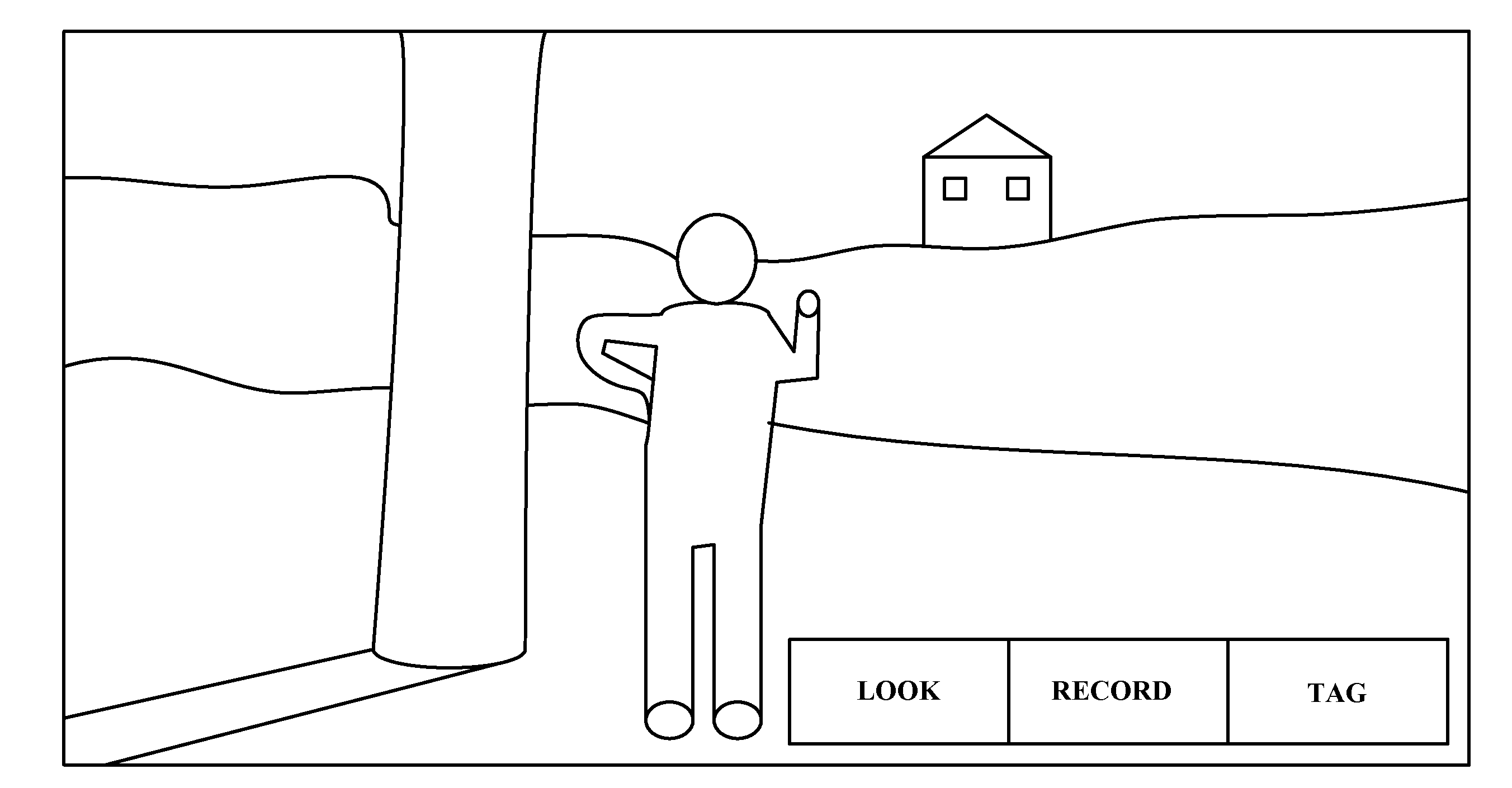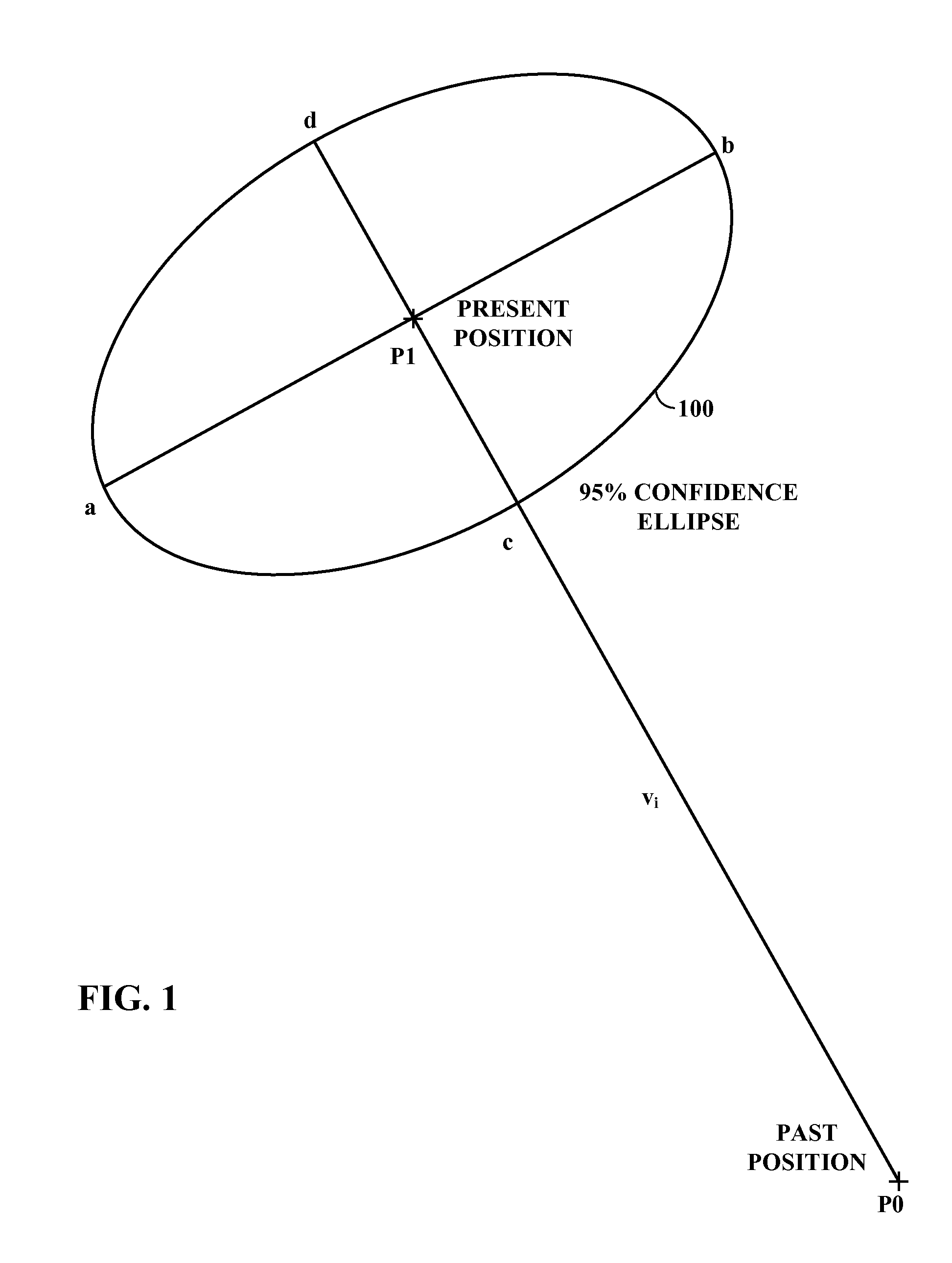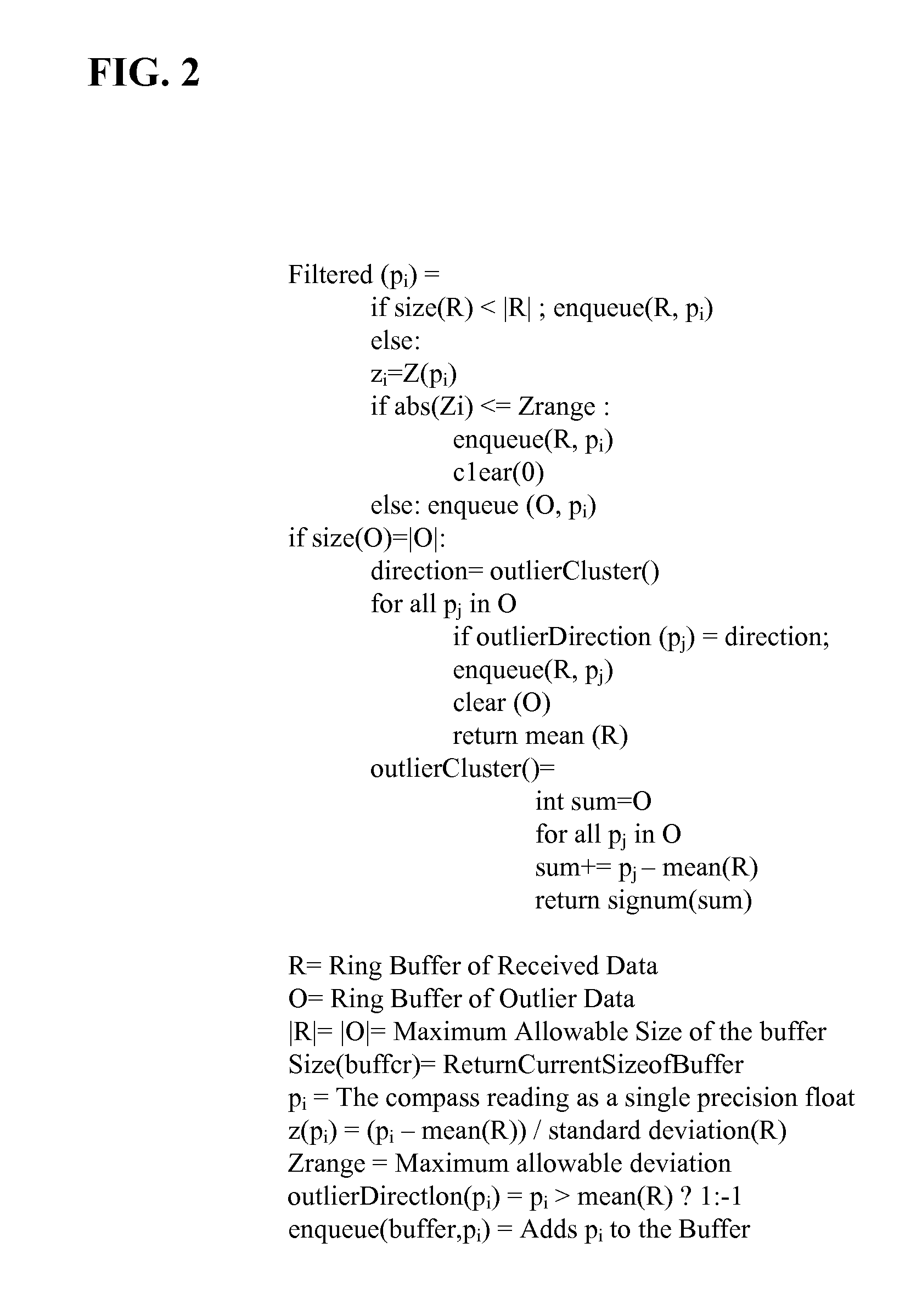Augmented reality system for position identification
a position identification and augmented reality technology, applied in the field of augmented reality systems, can solve the problems of limiting the usability of augmented reality applications, requiring direct line-of-sight views to satellites, and expensive custom setups,
- Summary
- Abstract
- Description
- Claims
- Application Information
AI Technical Summary
Benefits of technology
Problems solved by technology
Method used
Image
Examples
second embodiment
[0034]In a second embodiment, the metadata may include annotations by a server or a user acquiring the video. The annotations may include details of a person, an object, or a location being photographed. The annotations may help users share their experiences and / or recommended locations. The acquiring and retrieving of imagery may be performed by different persons, including friends or clients for example.
third embodiment
[0035]In a third embodiment, the video and metadata may be communicated on at least one network. The retrieving may include pushing the data stream to a network, or pulling the data from a network in response to a request. The network may include a private network or the internet.
fourth embodiment
[0036]In a fourth embodiment, the retrieved video may be compared with the currently observed real-world scene to enable navigation. The embodiment may visually verify a real-world path or a real-world destination for a portable electronic device user.
PUM
 Login to View More
Login to View More Abstract
Description
Claims
Application Information
 Login to View More
Login to View More - R&D
- Intellectual Property
- Life Sciences
- Materials
- Tech Scout
- Unparalleled Data Quality
- Higher Quality Content
- 60% Fewer Hallucinations
Browse by: Latest US Patents, China's latest patents, Technical Efficacy Thesaurus, Application Domain, Technology Topic, Popular Technical Reports.
© 2025 PatSnap. All rights reserved.Legal|Privacy policy|Modern Slavery Act Transparency Statement|Sitemap|About US| Contact US: help@patsnap.com



